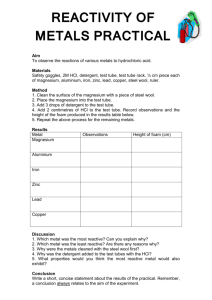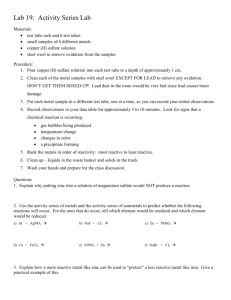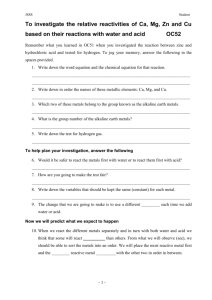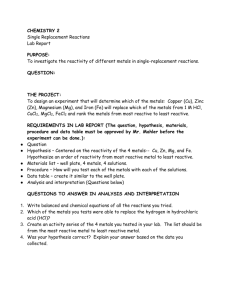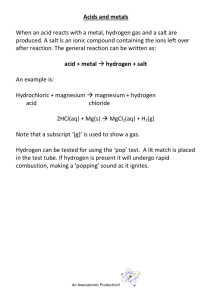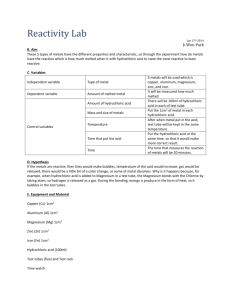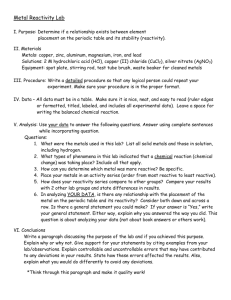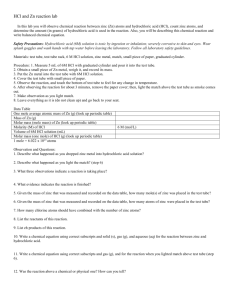Metal/Acid Reactions: Experiment & Lab Report Guide
advertisement
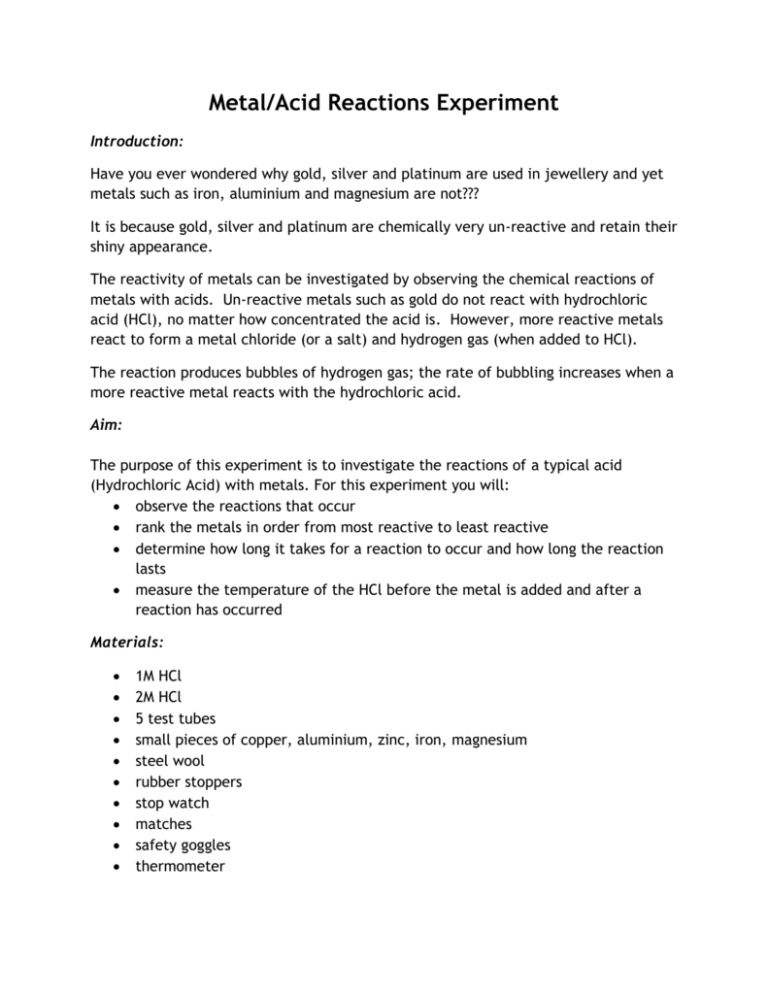
Metal/Acid Reactions Experiment Introduction: Have you ever wondered why gold, silver and platinum are used in jewellery and yet metals such as iron, aluminium and magnesium are not??? It is because gold, silver and platinum are chemically very un-reactive and retain their shiny appearance. The reactivity of metals can be investigated by observing the chemical reactions of metals with acids. Un-reactive metals such as gold do not react with hydrochloric acid (HCl), no matter how concentrated the acid is. However, more reactive metals react to form a metal chloride (or a salt) and hydrogen gas (when added to HCl). The reaction produces bubbles of hydrogen gas; the rate of bubbling increases when a more reactive metal reacts with the hydrochloric acid. Aim: The purpose of this experiment is to investigate the reactions of a typical acid (Hydrochloric Acid) with metals. For this experiment you will: observe the reactions that occur rank the metals in order from most reactive to least reactive determine how long it takes for a reaction to occur and how long the reaction lasts measure the temperature of the HCl before the metal is added and after a reaction has occurred Materials: 1M HCl 2M HCl 5 test tubes small pieces of copper, aluminium, zinc, iron, magnesium steel wool rubber stoppers stop watch matches safety goggles thermometer Method: 1. Pour approximately 5 cm of 2M Hydrochloric Acid into a test tube. 2. Measure the temperature of the acid. 3. Clean a piece of zinc with the steel wool until it is shiny. 4. Add zinc to the test tube and LOOSELY seal with a rubber stopper. 5. Begin timing the reaction as soon as the metal is added. 6. Record visual observations (ex. presence and rate of bubbles) and the times they occurred at. 7. Stop timing when reaction ends (or after 5 minutes). 8. Perform a ‘pop’ test by lighting a match, removing the rubber stopper and holding the match to the mouth of the test tube. * Remember to hold the test tube and the lit match away from yourself and others! 9. Measure the temperature of the acid after the reaction has occurred. 10. Repeat steps 1 – 9 with Al, Fe, and Cu. 11. Pour approximately 5 cm of 1M Hydrochloric Acid into a test tube. 12. Complete steps 2 – 9 using the magnesium this time. Observations: Complete the following table with your observations from the metal / acid reactions: Metal Visual Observations (rate of bubbling) Time (initial) Time (final) Initial Temp. (HCl) Final Temp. (HCl + metal) after reaction Zinc (Zn) Aluminium (Al) Iron (Fe) Copper (Cu) Magnesium (Mg) Conclusions: Rank the metals in order of most reactive to least reactive. - Write the word equation (if any), for each reaction. - POP test √ or X How can you explain the different reactions that occurred? Why (or why not) did the ‘pop’ occur?
